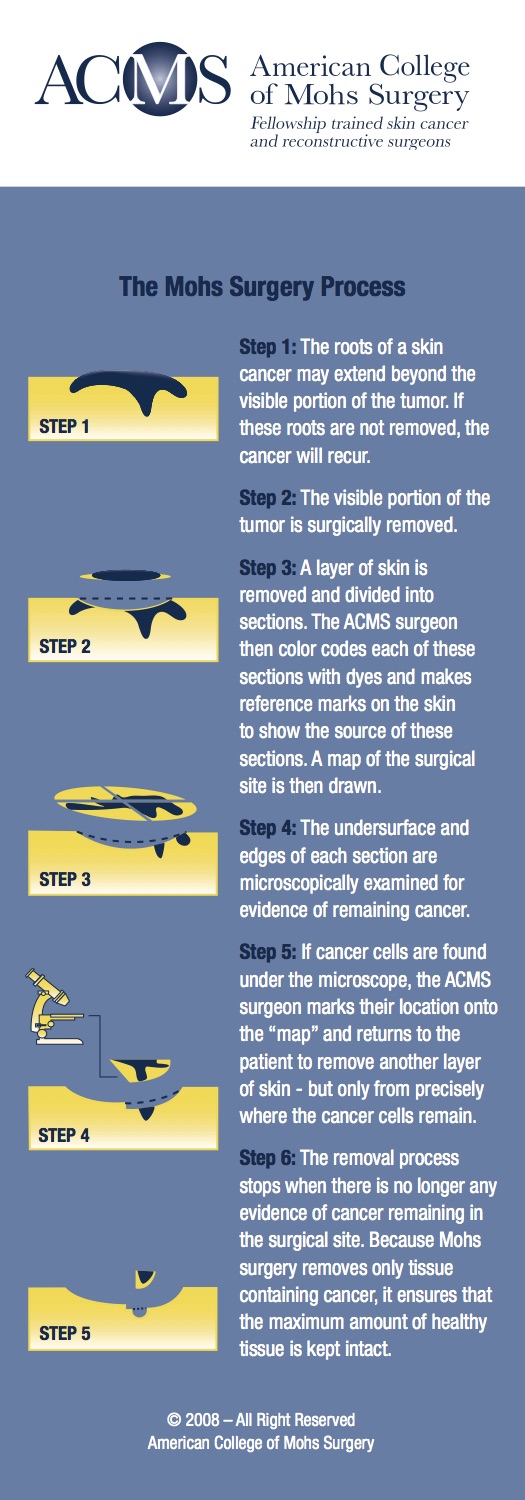
What is Mohs surgery?
Mohs micrographic surgery is a specialized surgical procedure used to treat skin cancers, typically located on the head and neck. Certain tumors on the rest of the body are also treated using Mohs surgery. The name "Mohs" honors the doctor who developed the technique in the 1930’s, Dr. Fredrick Mohs.
What is the Mohs procedure?
After check-in, you will be brought to the surgical room where the area around your skin cancer will be numbed using a local anesthetic (a shot). Once the area is numbed, a disc shaped piece of tissue will be removed and the bleeding controlled. The tissue will be taken to our lab for processing. A pressure dressing will be placed over your surgical wound and you will wait for about one hour for the microscopic slides to be prepared. During this time you may rest, read, use our wireless network or take a walk around the building.
Dr. Golden will then examine the slides under the microscope and be able to tell if any tumor is still present. If cancer cells remain another section of tissue is then removed and the procedure is repeated until Dr. Golden determines that there are no cancer cells remaining. This process preserves as much normal, healthy tissue surrounding the skin as possible.
Once all of the skin cancer is removed you will be left with a wound. Several reconstruction options will be discussed with you in order to provide the best possible functional and cosmetic result. The reconstruction is usually performed on the same day.
What are the benefits of Mohs Micrographic Surgery?
The technique offers three main advantages over traditional skin cancer removal treatments:
- The highest cure rate. Mohs surgery has the highest success rate of all treatments for skin cancer – up to 99%.
- Tissue sparing. During Mohs surgery, only the skin with tumor in it is removed and therefore the patient is left with the smallest wound or “defect” possible. Smaller defects mean smaller scars once the area is closed. In traditional excisions, the edges are not checked in "real-time" so safety margins are necessary resulting in larger defects and eventually larger scars. On the face, even a few of millimeters difference in a scar length can make a difference cosmetically.
- Same day procedure. Mohs surgery is typically done over the period of one day. The skin cancer is removed and the surgeon examines the margins under the microscope while the patient waits. Only small pieces of tissue are removed at a time to preserve as much normal skin as possible. Once the skin cancer is removed, the wound will then be repaired.
